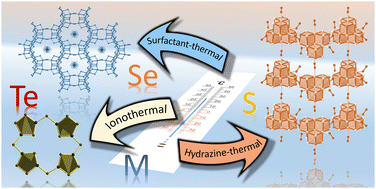Crystalline chalcogenidometalate-based compounds from uncommon reaction media
Abstract
Chalcogenides are one of the most versatile inorganic materials families, further subdivided into a large variety of specific groups of compounds, ranging from neat binary or multinary solids and nanoparticles of the same formal compositions, both in crystalline or non-crystalline form, to complicated open-framework structures and cluster compounds, also including organ(ometall)ic derivates of the latter. The large variety regarding both the compositions and the structures is associated with an enormous variety of properties, ranging from simple or high-tech pigments through a multitude of opto-electronic devices and electrolytes to materials for ion separation or high-sophisticated catalysts. Naturally, this also goes hand in hand with a corrosponding breadth of synthesis strategies. Traditionally, chalcogenides have been accessed via high-temperature methods, which continuously have been replaced by lower-temperature approaches for economical and ecological reasons. Moreover, more recent methods also showed that new types of chalcogenide materials can be obtained under such milder conditions that are not accessible via traditional routes. To shed light onto one of the numerous families of chalcogenides, this feature article summarizes current achievements in the generation of multinary chalcogenidometallate-based clusters and networks via non-classical routes, using ionic liquids, surfactants, or hydrazine as reaction media at moderately elevated termperature.

- This article is part of the themed collection: ChemComm Community – Dedicated Authors


 Please wait while we load your content...
Please wait while we load your content...